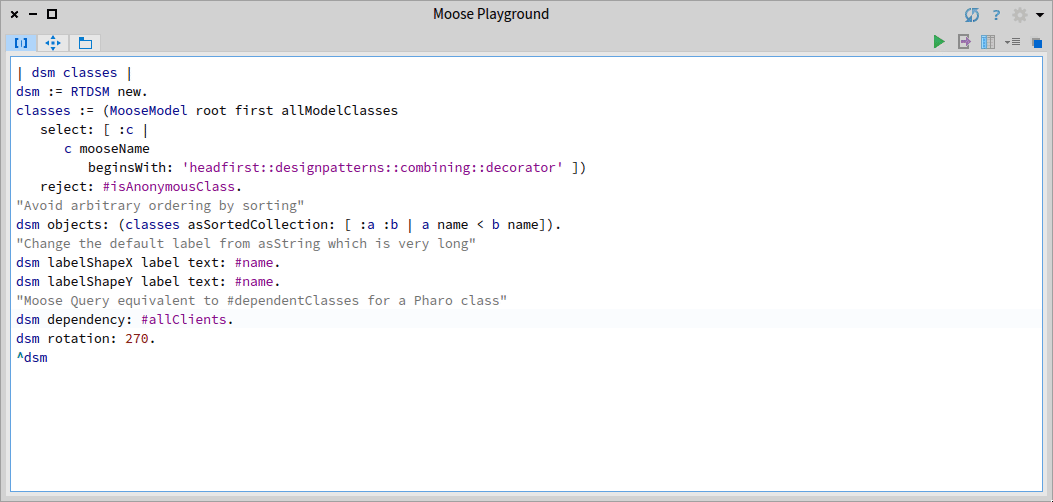Dependency Structure Matrix for a Java project using Moose
As an extension to Analyzing Java With Moose, in this post I will show how one can create a Design Structure Matrix (DSM) in Moose, in particular from a model of a Java project.
First, you need to generate and load an MSE file into Moose for a Java project. Refer to this post for those steps, which uses the Java code from from Head First Design Patterns.
Roassal (which is a visualization platform that’s part of Moose) has a visualization for DSM called RTDSM. It’s explained here, but with Pharo classes. How to use it with Moose on a Java model?
The key is in the dependency: block, which we define using a Moose Query with allClients. Open a Moose Playground and paste the following Pharo code:
| dsm classes |
dsm := RTDSM new.
classes := (MooseModel root first allModelClasses
select: [ :c |
c mooseName
beginsWith:
'headfirst::designpatterns::combining::decorator' ])
reject: #isAnonymousClass.
"Avoid arbitrary ordering by sorting"
dsm objects: (classes asSortedCollection: [ :a :b | a name < b name]).
"Change the default label from asString which is very long"
dsm labelShapeX label text: #name.
dsm labelShapeY label text: #name.
"Moose Query equivalent to #dependentClasses for a Pharo class"
dsm dependency: #allClients.
dsm rotation: 270.
^dsm
This visualization may not be as powerful as IDEA’s DSM analysis or Lattix’s, but it’s open source and can be manipulated in Pharo.
In Moose Query, the opposite to allClients is allProviders.